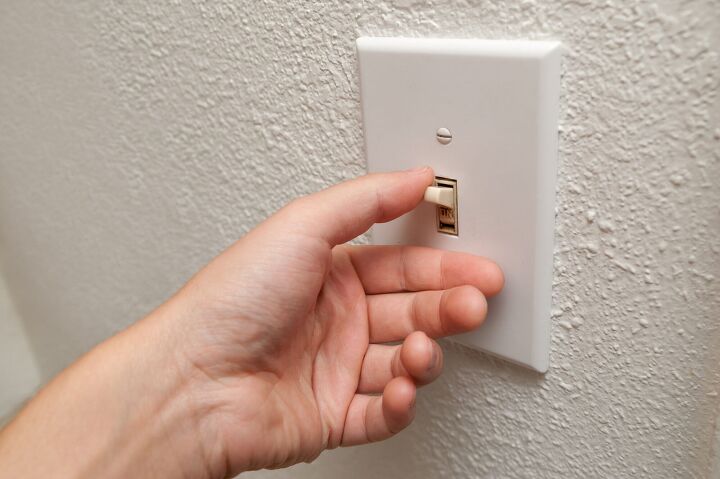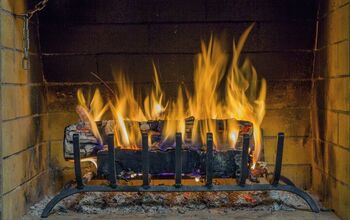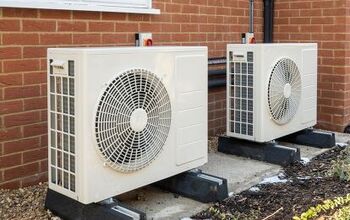What Amp Light Switch Do I Need? (Find Out Now!)

The purpose of light switches and dimmers is to open and close electrical circuits, which control the light fixture. Before installing or replacing a light switch, it’s important to ensure that the switch you choose matches the amperage rating and voltage of where it’s going to be mounted. For this reason, you may find yourself asking: What amp light switch do I need?
Most residential light switches are rated at 15 amps, while industrial switches (and some residential switches) are rated at 20 amps. 15 amp switches should be connected to a 14-gauge wire and 20 amp switches need to be connected to a 12-gauge wire. As a general rule of thumb, 15 amps is ideal for when you have one or two lights on one switch. Whereas, if you have several lights on one switch, you’ll likely want to opt for a 20 amp switch.
Let’s take a closer look at the various types of switches available today, as well as how to know which amp light switch you need for your intended purposes.
Do You Need to Hire an Electrician?
Get free, zero-commitment quotes from pro contractors near you.

Types of Switches
Put simply, switches are used to control the power to a load. They are used on anything that operates electricity – from garbage disposals and ceiling fans to electronics and lights. When is switched is turned off, the circuit path is open and no current passes through the circuit. Whereas, when a switch is turned on, there is a continuous path created that allows the current to flow through the circuit energizing the load.
Wall switches are among the most common and crucial electrical devices in a home. Although switches are commonly used to control lights, they can be used to turn the electrical current on or off for virtually any electrical device. There are several different types of switches, with the following being the most common ones you’ll find in your home.
1. Single Pole Switch
A single pole switch is the standard up-and-down type switch, used to control a light, receptacle or some other device from one location. One distinguishing feature of these switches is that they feature on and off markings on the toggle itself. You won’t find this on three-way or four-way switches. Single-pole switches feature two brass-colored screw terminals, which are usually black and are connected to the hot (aka power-source) wires.
One of these brass terminals is responsible for the incoming hot wire from the power source, while the other is intended for the outgoing hot wire to the fixture. Most of these switches also have a ground terminal that connects the circuit’s ground wire.
Single-pole light switches are both the easiest to install and replace. They also come in traditional toggle or rocker styles. Single pole switches are commonly rated for 15 or 20 amps.
2. Double Pole Switch
Double pole switches are often found in industrial settings but may also be used in some residential home wiring systems. Like the single pole switch, these switches typically have on/off markings and are used to control an electrical device from one location. The key difference a single and double pole switch is that double pole switches have four hot brass terminals instead of two, in addition to a ground terminal.
The additional brass terminals allow two pairs of hot wires to be connected from a 240-volt circuit. Most double pole switches are typically rated for 30 amps, compared to 15 to 20 amps for standard switches. The extra amperage allows these switches to control the power that feeds higher-demand electrical devices – such as motors, appliances, and machinery.
3. Three-Way Switch
Three-way switches are used in pairs, allowing you to control a light or other device from two different locations. They don’t have on/off markings, as the on and off positions will vary as the switches are operated. A three-way switch features three terminal screws, with the hot wire from the power source connecting to the darkest screw terminal labeled “COM,” or common. This common terminal is also where the LOAD or Hot that leaves the pair of three-way switches attaches.
Put simply, the hot comes in on one of the common terminals, leaves on the other common terminal, and the two travelers connect the two three-way switches together. The additional two terminals on a three-way switch are known as travelers. They are interchangeable, but for safety purposes, should always be understood as hot wires. These switches also feature a ground screw.
You’ll often see three-way switches on both ends of a staircase, in hallways, garages, basements, or anywhere else where two distinct switches are needed to control one light.
4. Four-Way Switch
Four-way switches are used between three-way switches to control a light fixture or outlet from three or more locations. Though, if you want control over five locations, for example, you would still use two three-way switches and three four-way switches. These switches visibly look similar to double-pole switches, except for the fact that they do not have on/off markings.
They also have four terminals, in addition to a ground terminal, that are typically brass-colored. There is not a “COM” terminal, like there is on a three-way switch. A four-way switch essentially functions as a switching mechanism for traveler wires between three-way switches. Although they are not widely used, you’ll sometimes see four-way switches in long hallways and exceptionally large spaces that have more than two entrances.
Switch Ratings
Switches, as well as outlets, receptacles, plugs, and the like, are designed and given a distinct rating based on their electrical characteristics. The rating of a switch depends on a number of factors including the insulation class, material, specific application, and the space between the contacts. With that said, there are two main ratings for a switch:
- Current Rating: Measured in amperes, the indicated current rating describes the maximum ampacity that the switch can carry in the connected circuit.
- Voltage Rating: This rating refers to the maximum voltage that the switch can be used and installed in a particular circuit.
With that said, let’s explore how to choose the right size of switch based on the current and voltage capacity.
Current Rating of a Switch
All switches, outlets, plugs, connectors, etc., are given two amperage ratings: the safe maximum and maximum current.
A switch’s maximum current rating depends on the circuit voltage and must never exceed the exact circuit rating. For example, a 15 amp switch has a maximum current rating of 15 amps. If the maximum current rating does exceed the exact current rating, it will melt and weld the switch contacts, rending the switch useless. Put simply, a 15A switch should never be used for a 20A load current.
In most cases, residential devices are operated with 15A (14 gauge) load circuits. However, occasionally, 20A (12 gauge) circuits are sued for 240V AC supply – based on the load wattage. Whereas, the safe maximum current can be calculated by multiplying the maximum current by 80%. This means that a 15A switch can be safely used for a 12A load current. While 15A switches may be used for exact 15A switches for non-continuous loads, with continuous loads a 15A switch must only be used for a maximum of 12A load circuit.
Switch Voltage Rating
The voltage rating of a switch describes the maximum allowable voltage of the circuit where the switch is to be used for different loads. A switch may be rated for AC voltage, DC voltage, or both with different ampacity and values. For instance, a switch might be rated for 240V AC, 230V AC, 15 Amps, 120V DC, 20A, etc. Make sure that you consult the user manual or nameplate date on the switch prior to installation.
Regardless, the supply voltage must never exceed a switch’s voltage rating. In other words, if you connect a 120V switch on 500V, the applied voltage could jump over the open contacts of the circuit and connect the load to the supply voltage. This can lead to overheating due to overvoltage, causing sparks and potentially a fire. To help explain switch voltage ratings further, a switch rated for:
- 120V may only be used for 120V.
- 240V may only be used for 120V, 240V, and not for 277V (commercial purposes)
- 120-277V may be used for 120V, 240V, and 277V
What Amp Light Switch Do I Need?
The large majority of residential light switches are rated at 15 amps, but this can vary based on the type. Industrial or commercial light switches are commonly rated for 20 amps, but some may be rated for 30 amps.
Regardless, 15 amp switches are designed to be connected to a 14 gauge wire, while 20 amp switches should be connected to a 12 gauge wire. A good rule to go by is to use 15 amp switches for applications that have one or two lights on one switch. If you have multiple lights on a switch, it’s best to choose a 20 amp light switch instead.
Do You Need to Hire an Electrician?
Get free, zero-commitment quotes from pro contractors near you.

Related Questions
Can you combine 12 and 14 gauge wire on a 20 amp circuit?
Although you can use 12 gauge wire on a 15 amp circuit, you should never put 14 gauge wire on a 20 amp circuit. This can cause the wires to melt and result in a fire before even tripping the breaker.
How do I know the ampacity of my lighting circuit?
To find out the ampacity of your lighting circuit, go to your main panel and locate the breaker that feeds the lighting circuit for the switch you’re trying to replace. The breaker will be marked with either a 15 or a 20, indicating which amp light switch to go with.

Jessica considers herself a home improvement and design enthusiast. She grew up surrounded by constant home improvement projects and owes most of what she knows to helping her dad renovate her childhood home. Being a Los Angeles resident, Jessica spends a lot of her time looking for her next DIY project and sharing her love for home design.
More by Jessica Stone
























![How To Reset A Whirlpool Cabrio Washer [In 5 Easy Steps!]](https://cdn-fastly.upgradedhome.com/media/2023/07/31/9076531/how-to-reset-a-whirlpool-cabrio-washer-in-5-easy-steps.jpg?size=350x220)


